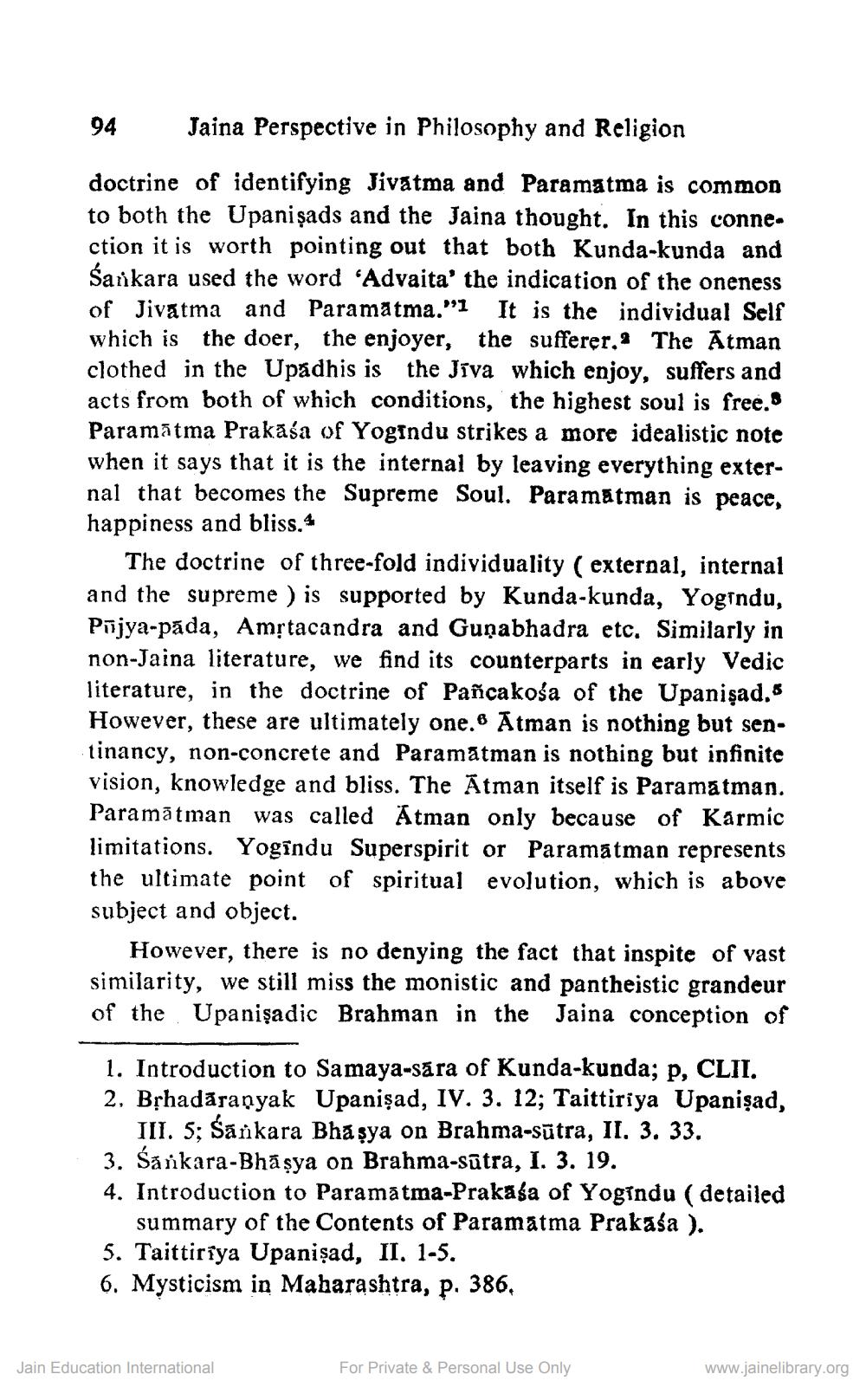________________
94
Jaina Perspective in Philosophy and Religion
doctrine of identifying Jivatma and Paramatma is common to both the Upanişads and the Jaina thought. In this conne. ction it is worth pointing out that both Kunda-kunda and Sarkara used the word 'Advaita' the indication of the oneness of Jivatma and Paramatma." It is the individual Self which is the doer, the enjoyer, the sufferer, The Atman clothed in the Upadhis is the Jiva which enjoy, suffers and acts from both of which conditions, the highest soul is free. Paramātma Prakāśa of Yogindu strikes a more idealistic note when it says that it is the internal by leaving everything external that becomes the Supreme Soul. Paramātman is peace, happiness and bliss.
The doctrine of three-fold individuality ( external, internal and the supreme ) is supported by Kunda-kunda, Yogindu, Pūjya-păda, Amộtacandra and Guņabhadra etc. Similarly in non-Jaina literature, we find its counterparts in early Vedic literature, in the doctrine of Pañcakośa of the Upanişad.s However, these are ultimately one. Ātman is nothing but sentinancy, non-concrete and Paramātman is nothing but infinite vision, knowledge and bliss. The Ātman itself is Paramatman. Paramātman was called Atman only because of Karmic limitations. Yogindu Superspirit or Paramātman represents the ultimate point of spiritual evolution, which is above subject and object.
However, there is no denying the fact that inspite of vast similarity, we still miss the monistic and pantheistic grandeur of the Upanişadic Brahman in the Jaina conception of
1. Introduction to Samaya-sara of Kunda-kunda; p, CLII. 2. Bịhadāranyak Upanişad, IV. 3. 12; Taittiriya Upanişad,
III. 5; Śārkara Bhaşya on Brahma-sūtra, II. 3. 33. 3. Śănkara-Bhāşya on Brahma-sūtra, I. 3. 19. 4. Introduction to Paramātma-Prakasa of Yogindu ( detailed
summary of the Contents of Paramatma Prakasa ). 5. Taittiriya Upanişad, II. 1-5. 6. Mysticism in Maharashtra, p. 386.
Jain Education International
For Private & Personal Use Only
www.jainelibrary.org




